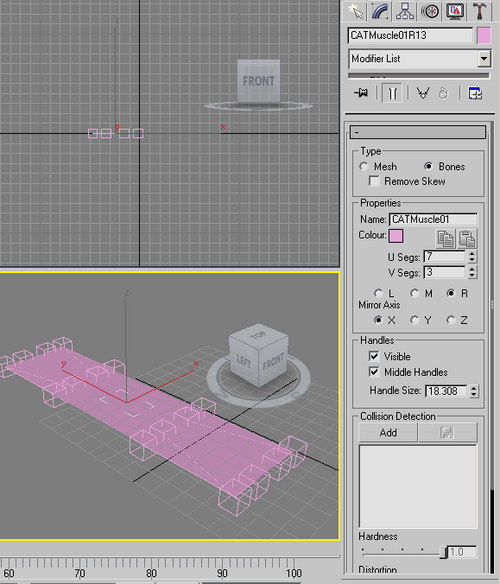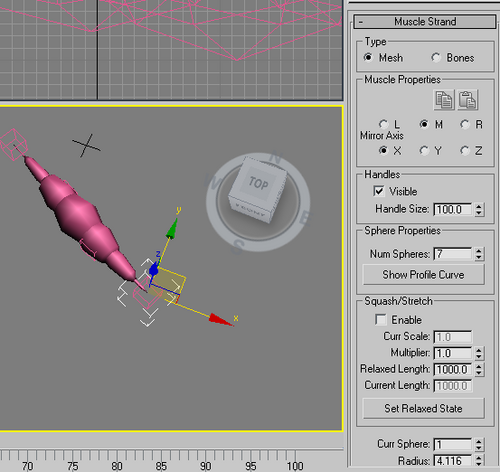In 3ds Max CAT, muscles are helper objects that you can use to create a skin that looks realistic when stretched and deformed.
For example, the following illustration shows how the Marama rig's shoulder and upper arm have collapsed after being twisted and pulled in various directions. (Marama is one of the standard CATRigs included with 3ds Max CAT.)

Marama's shoulder will behave better once we finish applying the CATMuscle to her CATBones.
That happened because Marama's rigging includes no muscle objects: The skin shape is determined by the relative positions of the CATBones.
In the image, the purple patches are the segments of a CATMuscle that were created and shaped to use as muscles for her pectorals and shoulder. To complete the job, we would need to:
A CATMuscle is a multi-segmented helper object that is best used for broad areas, such as the shoulders and pectorals, that need relatively consistent stretching and deforming.
After creating a CATMuscle, you can modify how it is segmented, its collision-detection properties, and so on.

A Muscle Strand is like a Bezier curve between two points. Strands provide more precision than CATMUscles, and give better results when the skin must be twisted.
While CATMuscles are best for skinning shoulders and pectorals, muscle strands work better for skinning arms and legs.
The following illustration shows a muscle strand intended for use a bicep.

Freshly created muscle strand, suitable for shaping into a bicep
While the Create panel is open, you have some ability to shape the Muscle Strand with your mouse. But the Modify panel is where you set most of its properties.
Once you are satisfied with your bicep:
Once you are satisfied with the behavior of one arm, you can easily create a copy of the arm (including all the CATBones, the muscle strands, the skin, and so forth) that is a mirror of the original.